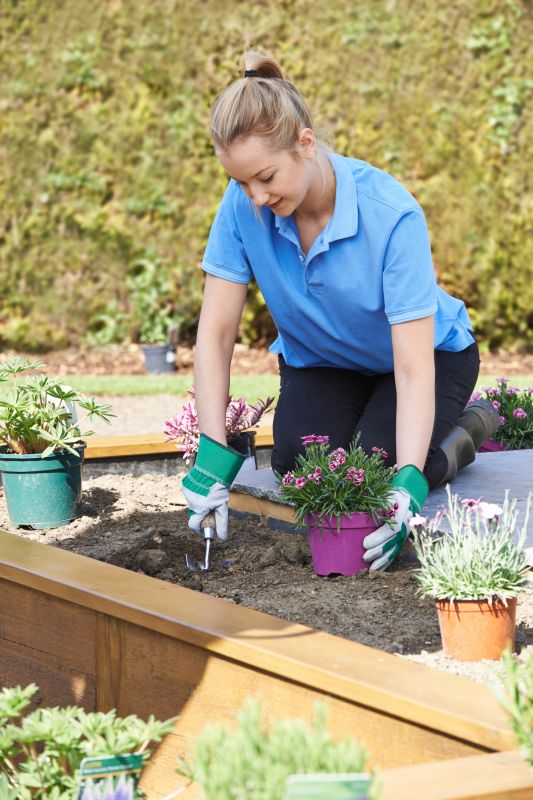Leading Products For Easy And Effective Planting Bed Installations
Choose from top-rated products designed to simplify the installation process and enhance your garden's overall look.
 Creating a well-designed planting bed involves selecting the right products to ensure durability, functionality, and aesthetic appeal. From foundational materials to finishing touches, the array of products available can cater to various styles and project scales. Proper installation not only enhances the visual appeal of a garden or landscape but also supports plant health by providing appropriate soil containment, drainage, and protection. Whether building a new bed or upgrading an existing one, understanding the essential products can help achieve a long-lasting and attractive result.
Creating a well-designed planting bed involves selecting the right products to ensure durability, functionality, and aesthetic appeal. From foundational materials to finishing touches, the array of products available can cater to various styles and project scales. Proper installation not only enhances the visual appeal of a garden or landscape but also supports plant health by providing appropriate soil containment, drainage, and protection. Whether building a new bed or upgrading an existing one, understanding the essential products can help achieve a long-lasting and attractive result.
Types of Products For Planting Bed Installations
Flexible Plastic Edging
Lightweight and easy to install, flexible plastic edging is a popular choice for defining planting beds with curved or straight lines.
Concrete Landscape Borders
Rigid concrete borders provide a sturdy and permanent boundary that can withstand heavy use and weather exposure.
Metal Edging
Durable metal edging options, such as steel or aluminum, offer a sleek look and long-lasting performance for defining planting areas.
Stone or Brick Edging
Natural stone or brick borders add a classic aesthetic and are suitable for formal or rustic landscape styles.
Landscape Fabric
A permeable fabric that suppresses weeds while allowing water and nutrients to reach plant roots.
Mulch Products
Various types of mulch, including bark, wood chips, or rubber, help retain moisture and reduce weeds.
Soil Amendments
Organic or inorganic amendments improve soil structure, fertility, and drainage for healthy plant growth.
Drainage Solutions
Gravel, drainage mats, or pipes facilitate excess water movement away from planting beds.
Retaining Walls
Structures that hold soil in place on slopes or raised beds, adding both function and visual interest.
Decorative Stones
Aesthetic stones used as ground cover or accents to enhance the visual appeal of planting beds.
Plant Supports and Trellises
Structures that support climbing or sprawling plants, helping to organize and optimize space.
Irrigation Systems
Drip lines, soaker hoses, or sprinklers ensure consistent watering for healthy plants.
Planting Mixes
Specialized soil mixes tailored for flowers, vegetables, or shrubs to promote optimal growth.
Edge Restraints
Flexible or rigid products that help keep mulch and soil contained within the planting bed.
Lighting Fixtures
Landscape lighting to highlight features and improve safety around planting beds.
Popular Choices
A common choice for creating curved or straight boundaries with ease of installation.
Popular for their durability and clean appearance, suitable for formal landscapes.
Known for its sleek look and longevity, ideal for modern landscape designs.
Widely used for its natural look and soil moisture retention properties.
Essential for weed suppression and soil management in planting beds.
Versatile ground cover that adds texture and visual interest.
Used to improve water flow and prevent pooling in planting areas.
Popular for creating tiered gardens and supporting soil on slopes.
Trellises and stakes that help organize climbing and sprawling plants.
Efficient watering tools that deliver moisture directly to plant roots.
Preferred for their nutrient content and compatibility with various plants.
Enhance visual appeal and serve as mulch alternatives in planting beds.
Popular for highlighting features and providing safety around beds.
Easy-to-install options for defining borders with creative shapes.
Complete kits that simplify the construction of elevated planting areas.
The process begins with selecting suitable edging materials to define the space and keep soil and mulch contained. These can range from flexible plastic or rubber options to rigid stone or concrete borders, each offering different visual and functional qualities. Next, the choice of landscape fabric helps prevent weed growth while allowing water and nutrients to pass through, ensuring healthy plant development. Soil amendments and planting mixes are also vital, providing the necessary nutrients and structure for thriving plants.
Installing a planting bed also involves considering drainage solutions, such as gravel or drainage mats, to prevent water pooling and soil erosion. Mulch products are used to retain moisture, regulate soil temperature, and minimize weed growth, contributing to easier maintenance. For larger or more complex beds, additional components like tiered retaining walls or decorative stones can add visual interest and structural support. Proper planning and product selection can make the installation process smoother and result in a planting bed that is both functional and visually appealing over time.
Key Buying Considerations
- Material durability and resistance to weathering to ensure long-term performance.
- Compatibility of product size and shape with your landscape design and available space.
- Ease of installation, especially if undertaking a DIY project, including weight and flexibility.
- Aesthetic appeal and how well the product complements your overall landscape style.
- Maintenance requirements, including cleaning, repairs, or replacement needs over time.
- Cost and value for money, balancing quality with budget constraints.
- Drainage capabilities to prevent water pooling and soil erosion.
- Environmental factors such as exposure to sunlight, rain, and temperature fluctuations.
- Availability of accessories or complementary products for a cohesive installation.
- Compatibility with existing landscape features or structures.
- Ease of customization or shaping for curved or irregular bed layouts.
- Potential for expansion or future modifications to the planting area.
- Safety features, such as smooth edges or non-slip surfaces, especially in high-traffic areas.
- Brand reputation and customer reviews for reliability and satisfaction.
- Local regulations or restrictions that might influence material choice or installation methods.
This page contains affiliate links. We may earn a commission if you make a purchase through these links at no additional cost to you.
